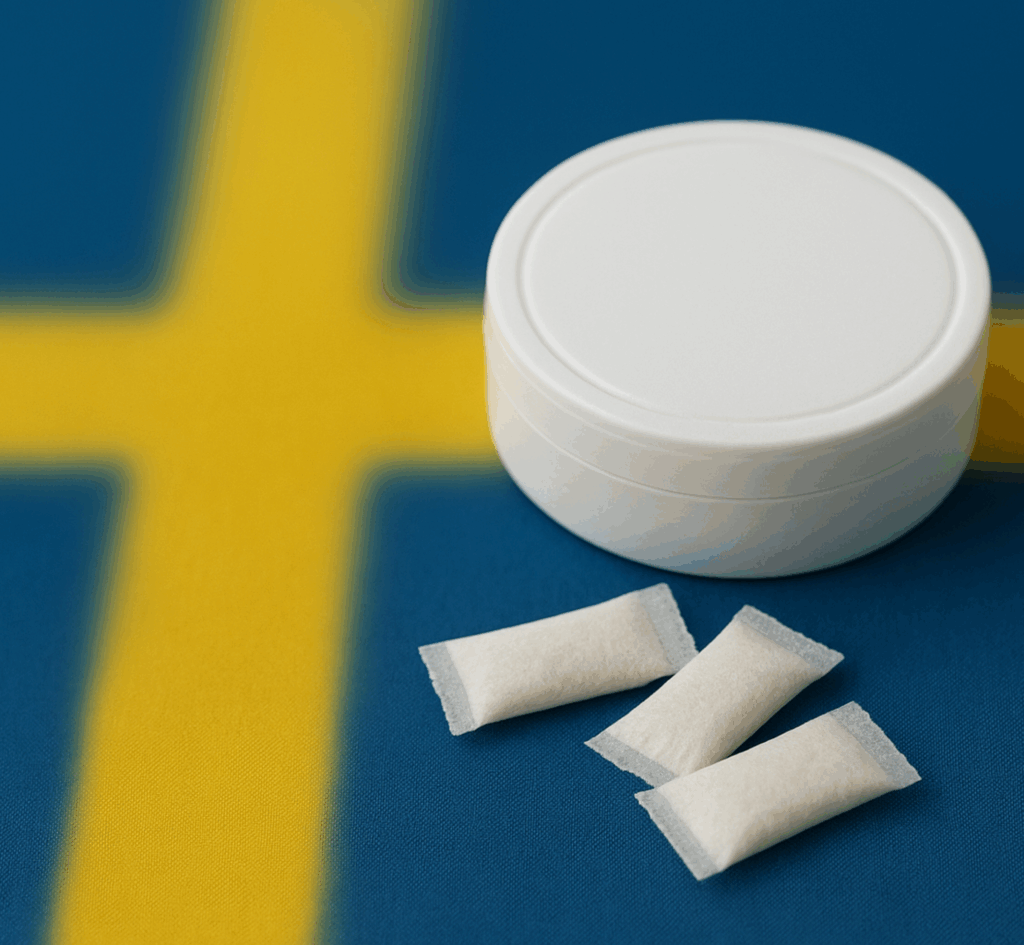Countries are desperately seeking the right way to approach nicotine pouches and with over 200 years of experience, Sweden is a shining light.
Swedish nicotine pouches have sparked an unwarranted moral panic across Europe. Countries are desperately seeking the right way to approach this novel product. Sweden is a nation with a history of snus usage spanning over 200 years and, recently, the birthplace of safer tobacco-free nicotine pouches. Instead of learning from Sweden and encouraging the adoption of an effective harm-reduction method, European countries are, at best, stigmatising and, at worst, prohibiting nicotine pouches. Our work as an organisation has revealed just how much is at stake. Nicotine pouches save thousands of lives in Sweden; many more lives could be saved throughout Europe, too.
Nicotine pouches are small, teabag-like pouches placed under the lip, releasing nicotine into the bloodstream. They are smoke-free, tobacco-free, and have 99.8% less cancer risk than cigarettes. While their function resembles the old Swedish product snus, the absence of tobacco sets them apart. Since introducing nicotine pouches on the Swedish market in 2016, smoking rates have plummeted from 12% to less than 6%. Sweden is on track to becoming the first country to meet the EU target of achieving smoke-free status, defined as having a smoking frequency lower than 5%. Paradoxically, the European Union might impede this positive development by hindering the use of alternative products. Discussions on severely regulating or prohibiting nicotine pouches have already begun.
Although understandable at face value, the moral panic lacks substance, revolving as it does around concerns such as accessibility and the attractiveness of the often sweet or minty flavours, particularly among younger individuals. Misconceptions about the product’s composition and dangers contribute to the alarm. While all nicotine products contain an addictive component, the risks relative to cigarettes are negligible.
A rational approach to address these concerns would involve studying the originating country, which has already successfully grappled with these questions, and modelling legislation accordingly. In Sweden, an age limit of 18 years is enforced, and various nicotine products are taxed according to their established harmfulness. The objective is to incentivise individuals to transition from the more harmful product (i.e., cigarettes) to safer alternatives such as nicotine pouches or snus.
Rather than being deemed dangerous, flavours are understood to be one of the primary reasons people switch from cigarettes to nicotine pouches. The effect is most pronounced among Swedish women, for whom smoking rates have dropped by 40% since the launch of nicotine pouches. At the same time, women’s use of snus and nicotine pouches hasincreased.
Despite Sweden’s success in reducing smoking rates through this transformative harm reduction model, some countries, such as the Netherlands, have chosen a complete ban. Consequently, they are missing out on a life-saving product that has already saved thousands of lives in Sweden. In a report from Smoke Free Sweden, the estimated number of lives that could have been saved in the European Union between 2000-2019 is 2.9 million if all the countries had the same smoking-related mortality rates as Sweden.
The push to ban nicotine pouches extends beyond individual countries and has reached the European Union itself as it seeks a unified approach to new and emerging nicotine products. This course of action would not only be detrimental to countries now presented with a significantly healthier and safer alternative on their journey toward the 2035 smoke-free goal. It would also put Sweden in a rather uncomfortable position where its best smoking substitute would be banned or deprived of the central components of its success.
Nicotine pouches have demonstrated their potential to save lives by reducing tobacco-related harm. Banning them instead of adopting Sweden’s successful regulatory model risks slowing our progress toward a smoke-free future with healthier and longer lives. Our focus should remain on ensuring accessibility, avoiding counterproductive flavour or nicotine restrictions, and enforcing an age limit, perhaps through a licensing system, while adjusting taxation to align with harm levels. Ultimately –and this is a point worth repeating – nicotine pouches have the potential to save millions of lives. Sweden is already doing it, and it is up to the rest of the European Union to follow in its footsteps.
Originally published here



